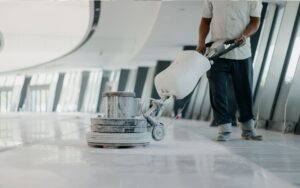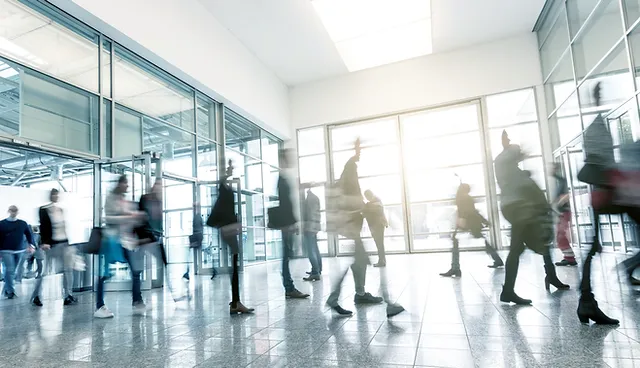High-traffic areas, such as malls, airports, hospitals, and office lobbies, are constantly exposed to a large number of people, making them particularly challenging to keep clean. Maintaining cleanliness in these spaces is crucial for health, safety, and a positive user experience. This comprehensive guide explores the unique challenges of cleaning high-traffic areas and offers strategies to ensure these spaces remain hygienic and welcoming.

Impact of Cleanliness in High-Traffic Areas
Why Cleanliness Matters in High-Traffic Areas
High-traffic areas see a continuous flow of people, which increases the accumulation of dirt, germs, and wear and tear on surfaces. Cleanliness in these areas is vital for several reasons:
- Health and Safety: High-traffic areas are hotspots for bacteria and viruses, increasing the risk of spreading illnesses. Regular cleaning and disinfection help mitigate this risk, promoting a healthier environment for everyone.
- First Impressions: The cleanliness of high-traffic areas significantly impacts visitors’ perceptions. A well-maintained space reflects professionalism and care, creating a positive first impression.
- Preventing Wear and Tear: Continuous foot traffic can cause dirt and debris to grind into surfaces, causing wear and damage over time. Regular maintenance prevents long-term damage and extends the lifespan of flooring, carpets, and furnishings.
Challenges of Cleaning High-Traffic Areas
Cleaning high-traffic areas comes with unique challenges that require specific strategies:
- Continuous Foot Traffic: High-traffic areas rarely see downtime, making it difficult to perform thorough cleaning without disrupting operations or inconveniencing visitors.
- Diverse Contaminants: These areas accumulate a wide range of contaminants, from dirt and dust to food spills and biohazards. A comprehensive cleaning plan must address all potential contaminants.
- High Expectations: Because these spaces are often public or business-facing, there is an expectation of constant cleanliness. Even minor lapses in cleanliness can be noticeable and impact visitor satisfaction.
- Large Surface Areas: The size of high-traffic areas makes cleaning a time-consuming task. Efficient cleaning requires advanced equipment and well-trained staff to cover large areas quickly and effectively.
Effective Strategies for Cleaning High-Traffic Areas
To maintain cleanliness in high-traffic areas, consider implementing the following strategies:
- Routine and Reactive Cleaning: Establish a cleaning schedule that includes both routine cleaning tasks and reactive cleaning to address spills or messes immediately. Frequent cleaning of high-touch surfaces like door handles, railings, and elevator buttons is crucial.
- Use of High-Efficiency Equipment: Invest in high-efficiency cleaning equipment, such as ride-on floor scrubbers, which can clean large areas quickly. HEPA-filtered vacuums are essential for removing fine dust and allergens.
- Implement Matting Systems: Place high-quality entrance mats at all entry points to capture dirt and moisture from footwear. This simple measure can significantly reduce the amount of dirt tracked into the facility.
- High-Frequency Disinfection: High-traffic areas should be disinfected multiple times throughout the day, especially during peak usage periods. Electrostatic sprayers and UV-C light disinfecting equipment can provide efficient and effective disinfection.
- Training and Staffing: Ensure cleaning staff are well-trained in the latest cleaning techniques and are aware of the specific needs of high-traffic areas. Staffing levels should be adequate to cover the entire space without overburdening employees.
Importance of Selecting the Right Cleaning Products
Choosing the right cleaning products is crucial for high-traffic areas:
- Multi-Surface Cleaners: Use versatile, multi-surface cleaners that are effective on various materials, such as tile, wood, and carpet. This reduces the number of products needed and simplifies the cleaning process.
- Non-Toxic Disinfectants: Opt for non-toxic, environmentally friendly disinfectants that are safe for both people and surfaces. These products minimize chemical exposure and are safer for high-traffic public spaces.
- Protective Treatments: Consider applying protective treatments, such as sealants or coatings, to high-traffic areas to reduce wear and make cleaning easier. These treatments can help maintain the appearance of floors and other surfaces.
Case Studies: Successful Cleanliness in High-Traffic Areas
Examining successful examples of cleanliness in high-traffic areas can provide valuable insights:
- Airports: Major airports implement 24/7 cleaning operations with rotating shifts to ensure continuous cleanliness. High-tech equipment like robotic cleaners and air purification systems are used to maintain hygiene standards.
- Shopping Malls: Malls often use a combination of routine cleaning schedules and on-demand services to address spills or messes immediately. Food courts and restrooms receive special attention due to their high usage and contamination risk.
- Hospitals: In hospitals, cleanliness is paramount to preventing infections. High-traffic areas like lobbies and waiting rooms are cleaned frequently with hospital-grade disinfectants, and air quality is monitored to reduce the spread of airborne pathogens.
Conclusion
Maintaining cleanliness in high-traffic areas is essential for health, safety, and creating a positive experience for visitors. By implementing effective cleaning strategies, investing in the right equipment and products, and training staff adequately, businesses can ensure that their high-traffic spaces remain hygienic and welcoming. As expectations for cleanliness continue to rise, staying ahead with innovative cleaning practices will be crucial for maintaining standards and satisfying users.


Recent Comments